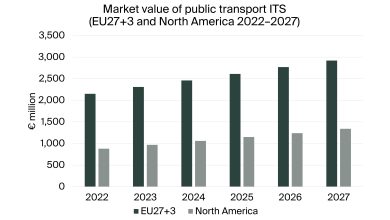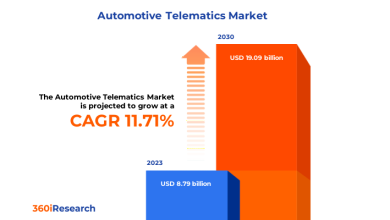Cockpit domain controller market to reach $15B by 2030
NEW YORK, April 23, 2024 /PRNewswire/ — The traditional tiered supply chain system is no longer relevant to the automotive industry, especially for the digital cockpit. Tier One suppliers have been evolving in their specialties and responsibilities accordingly. One of these roles is supplying component agnostic, mixed-criticality enabled, future-proofed digital Cockpit Domain Controllers (CDCs), which ABI Research, a technology intelligence firm, forecasts to reach a market size of US$15 billion by 2030, growing at a CAGR of 34%.
“Tier One auto suppliers have been squeezed from their legacy role of component sourcing and supply chain management. Tier Two suppliers are working more closely with OEMs for their System-on-Chip (SoC) and software needs. OEMs are taking more ownership of their technology stack through in-house software divisions or partnerships with Tier Two suppliers. COVID-19, the semiconductor shortage, and an industry-wide transition towards Software-Defined Vehicles (SDVs) has driven further OEM appetite for control over their value chain and the ability to innovate at accelerated timelines, which the CDC can enable,” explains Abu Miah, Smart Mobility and Automotive Analyst at ABI Research.
Safety certification and system integration remain a key responsibility of the Tier Ones in the digital cockpit ecosystem. However, they must make several adjustments to meet OEM needs for a new SDV age. According to Miah, “It’s common for companies to take SoC preferences from their OEM partners and build systems around these specifications. However, as next-generation CDCs gain popularity globally, OEMs will have stricter specifications for their choice of hypervisor too.” Tier Ones need to be flexible with their solution set to accommodate this, providing hardware and software agnostic solutions with pre-integrated feature sets – for example, Aptiv‘s Smart Vehicle Architecture (SVA), Visteon‘s SmartCore, or Continental‘s Cockpit High Performance Computer.
Tier One’s adjustments to the evolution of the automotive ecosystem demand strategic investment and R&D into new technologies. Within that, the digital cockpit ecosystem also necessitates focused attention and resources. “SDV digital cockpit system integration will require a high degree of software expertise. Adept roadmap planning with input from OEMs, silicon vendors, and more is essential. This is to construct upgradeable, flexible hardware and software architectures that can adapt to consumer expectations at unprecedented speeds,” says Miah.
These findings are from ABI Research’s The Evolving Role of the Tier One Supplier in the Automotive Digital Cockpit report. This report is part of the company’s Smart Mobility and Automotive research service, which includes research, data, and ABI Insights.




